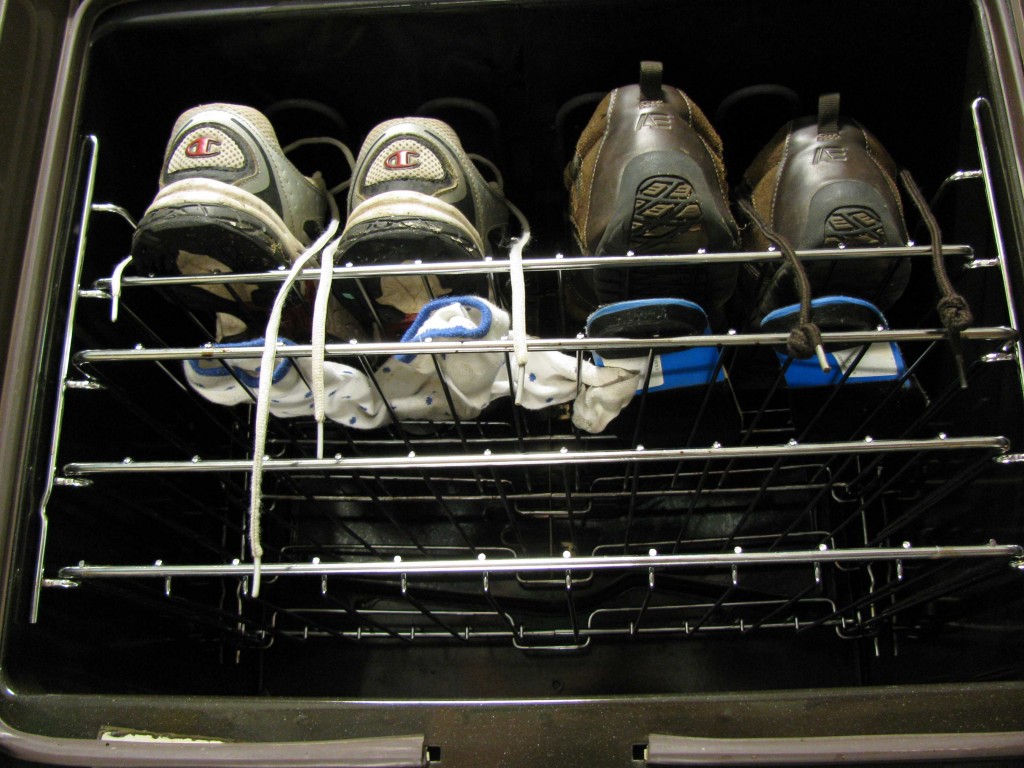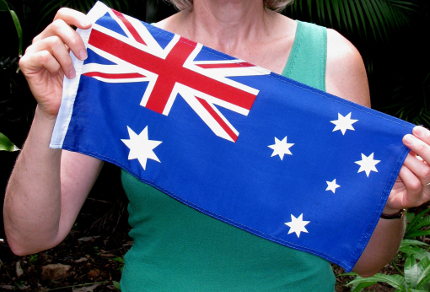The fruits of the Wet are becoming apparent. Garden shrubs and trees have pushed out new leaves and shoots. Mushrooms have sprouted from the golf club greens and a severed palm trunk outside our kitchen window. The slopes of Castle Hill and Mount Stuart look greener, richer. Frogs – one a vividly beautiful green tree frog with prominent toe pads – thrum out multi-toned serenades in the darkness. Yet, the rains have taken their toll, with fruits, leaves, and branches thrown to the ground, bird nesting habitat drowned, and this morning, a huge bough, fully a fifth of its parent tree’s biomass, split from the trunk and obstructing the path in the Ross River Parkway. Pelicans hunched on grass islands in the swollen river, as though waiting out the storm, and the dawn chorus was insipid, with few birds in sight. I ran and walked the river parkway in pouring rain, crossing Aplin’s Weir pedestrian bridge with the full force of the overspill pounding beside me.
I first completed this running program (designed to train a non-runner over a period of 13 weeks to finish a 10-kilometre run or run for an hour) back in 2003. I started it in the spring on quiet rural roads in Nova Scotia, and then started it again in the Yukon Territory during the summer, with my husband and sons running beside me. We ran parts of the Dempster Highway bordered by vast wilderness hills and mountains stretching away to the horizon, and we ran parts of the old Alaska Highway, a deteriorating gravel road decorated with wolf tracks, piles of grizzly dung, and creeks we splashed through. On our return to Nova Scotia at the summer’s end, I ran my 10 kilometres with the frosts of autumn spinning pure gold in the sugar maples cloaking the hills. Here, in Townsville, where my biggest running adventures to date have been dodging squashed cane toads on the level paved path of the Ross River Parkway, the roaring waterfall at Aplin’s Weir – resonant with wild energy in an otherwise beautiful but controlled city – spurred me on.

Oven ‘Drying Cupboard’ (Vilis Nams photo)
On my return to the house, I inserted my wet clothes into the oven, which I turned on low, with the fan on to circulate air. Our cooking oven has become our drying cupboard. In her book, The Tapir’s Morning Bath, Elizabeth Royte chronicled her year-long stay at the Smithsonian Tropical Research Institute field station on Barro Colorado Island in the Panama Canal, where she immersed herself in tropical biology through interviewing researchers and volunteering to assist some of them with their fieldwork. The island received an annual rainfall of around 3 metres. Station personnel battled the same issues of humidity control as did the radar operators at Radar Station 58 in the Queensland rainforest village of Paluma that Vilis and I visited on January 3. The labs at Barro Colorado, however, were equipped with air conditioning, and each personal room possessed a drying cupboard– a heated storage space that preserved field notebooks, leather footwear, and sanity.
Later I heard on ABC Radio National that Australians are showing a new pride, rather than shame, in having convicts in their ancestry.1 This ‘convict ancestry,’ I knew referred to the fact that Australia was founded by Europeans as a penal colony. In addition to listening to the radio program, I went online to the Australian government’s culture and recreation website and delved into Geoffrey Blainey’s A Shorter History of Australia. I learned that, following the American War of Independence, Great Britain could no longer ship its imprisoned hordes to the plantations and settlements of America, so instead hatched a plan to send them to New Holland a.k.a. Terra Australis (as Australia was then called), to help develop a strategic British base in the South Pacific.2
After an 8-month voyage punctuated by stops at the Canary Islands, Rio de Janeiro, and Cape Town, the First Fleet – 11 ships filled with marines and convicts, as well as supplies for the new colony – arrived at Botany Bay on January 18, 1788.2 The commander of the fleet, who also became the governor of the colony of New South Wales, was Captain Arthur Phillip. Philip soon realized that the harbour at the site James Cook had suggested for settlement wasn’t safe in certain conditions, and eight days later moved the fleet to a deep, protected harbour2 that is today graced with the white sails of the Sydney Opera House. There, he raised the Union Jack on January 26, 1788,2 the very first Australia Day, if you will.
Britain continued to transport convicts to Australia until 1868, with a total of about 162,000 convicts, both men and women, sent to the penal colony.3 Convicts hailed from England, Ireland, Wales, Scotland, as well as British colonies such as Canada and the West Indies.3 Most were thieves, some of whom had stolen livestock, money, weapons, baskets of food, even a bolt of cloth, or had been caught housebreaking, poaching, or embezzling.2,3 A few were political prisoners.3 Soldier convicts were transported for the crimes of mutiny, desertion, and insubordination.3 All were put to work according to their skills.3
The aim of developing a strategic British base in the South Pacific was not one easily won by the colonists.2 Soils were poor at the chosen site, labour was hard, food supplies were short, and scurvy ran rampant until vitamin-rich Aboriginal foods were added to the convicts and marines’ diets.2 Some of the prisoners escaped and disappeared into the wilderness. Many were translocated to Norfolk Island, which offered richer soil for crops. Those who stayed and worked out their sentences were often granted free land to farm.2,3 A few became the ancestors of future wealthy graziers.1
Once free men and women, the former convicts generally did their best to banish their convict history in order to forge ahead in the new land.1 However, the concept of ‘the convict stain’ arose largely as a result of a significant shaming campaign instigated by English free migrants in the mid-1850’s.1 Rather than being seen as resilient, hardworking, and rehabilitated survivors of the penal system (many of whom had exhibited good behaviour and were allowed to serve out their sentences on tickets of leave or probation), transported convicts became viewed as the worst of the worst in society.1
But now, Australians having convict ancestry are proudly researching their family histories and celebrating their convict roots.1 Some seek to join the Descendents of Convicts Group, and a major research study called Founders and Survivors is documenting the intergenerational histories of families having convict ancestry.1 No longer is a convict in the family a skeleton in the closet.
References:
1. ABC Radio National, Life Matters. Talkback: a convict in the family. January 29, 2010. © 2010 ABC. Accessed 27-Feb-2010. http://www.abc.net.au/rn/lifematters/stories/2010/2804307.htm
2. Geoffrey Blainey. A Shorter History of Australia. Random House Australia Pty Ltd, Sydney, p. 28-29.
3. Australian Government, Culture.Gov.Au. Convicts and the British colonies in Australia. Accessed 25-Nov-2010. http://www.cultureandrecreation.gov.au/articles/convicts/


